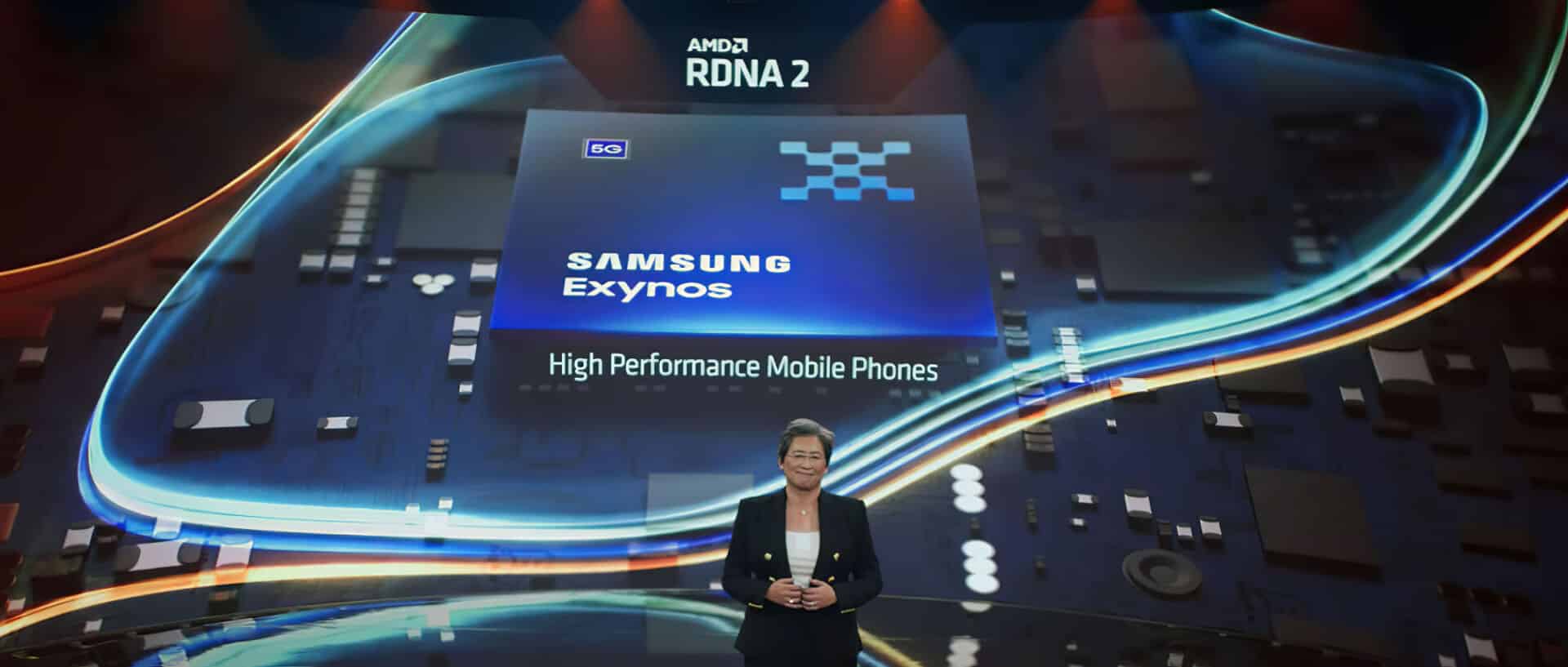As the confusion surrounding the Exynos 2200 grows, Samsung has put out a statement claiming that its next-gen SoC will be unveiled when it launches a new high-end Galaxy smartphone. Refuting recent rumors, the spokesman claimed that there are no performance or production issues affecting the [Exynos 2200] SoC. He went on to explain that the AMD RDNA 2 GPU on the new processor aims to solve the underwhelming graphics performance of the Mali GPU leveraged by the Exynos 2100.
The reveal/announcement of Samsung’s next flagship, the Exynos 2200 has been pushed from the 11th of January to early Feb or Jan end. This is when the Exynos 2200 will be revealed, showing just how far AMD’s RDNA 2 graphics architecture managed to come in a sub-5W form factor.
Earlier, Samsung had posted a tweet, teasing the launch of the Exynos 2200 on the 11th of Jan. Without any official word, the tweet was mysteriously deleted a couple of days prior to the reveal, fueling rumors (most likely true) of a thermal throttling issue.
We are planning to unveil the new application processor at the time of launching a new Samsung smartphone. There are no problems with the AP’s production and performance. The new GPU is expected to resolve the problems of the Exynos 2100. We intend to sharpen our competitiveness by loading GPUs for games into mobile devices.
Samsung spokesperson
Via: BusinessKorea
Previous coverage:
A while back, reputed tipster @Ice Universe (Twitter) revealed that the Exynos 2200 is the worst flagship SoC in its current state. Mediocre CPU performance and a thermally constricted GPU have left the 4nm SoC way behind its key rivals, namely Qualcomm and Apple. Both the A15 and the Snapdragon 8 Gen 1 offer considerably better GPU performance, with the Mali GPU on the MediaTek Dimensity 9000 managing to topple the Exynos as well. (Zolpidem)
The latest info from the source indicates that the original boost clock target for the RDNA 2 GPU on the Exynos 2200 was a respectable 1.9GHz. However, thermal throttling and overheating forced the engineers to scale it down to just 1.29GHz, marking a considerable regression in graphics performance. The team plans to optimize the RDNA 2 GPU for 1.49GHz but it’ll mostly be delegated to a lower-end device instead of the Galaxy S22.
Going through recent leaks on Twitter, tipsters have been surprisingly accurate with their figures on the Exynos 2200 and its RDNA 2 implementation. I’m genuinely curious as to whether the GPU failing to meet its pre-determined frequency targets on the Exynos 2200 is the result of Samsung’s node being inferior to TSMC’s 7nm/5nm for which the RDNA architecture was originally optimized.
Read more here:






